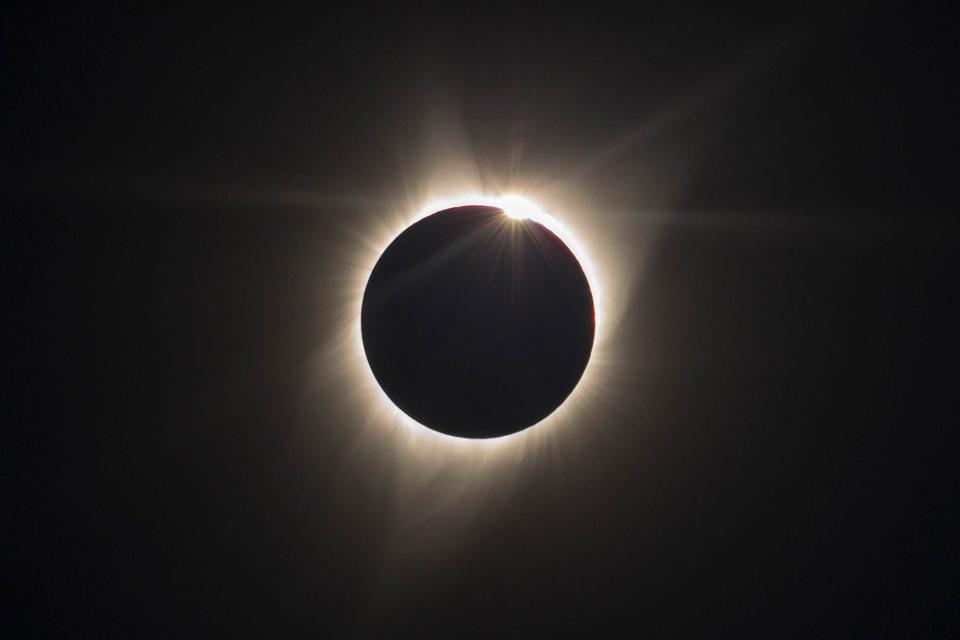A Rare Hybrid Solar Eclipse Is Coming — Here's How to See It From Anywhere in the World
The next hybrid solar eclipse is in 2031.

Harun Mehmedinovic/Getty Images
A rare hybrid solar eclipse will delight stargazers this week. While the celestial event won’t be visible in the United States, there are ways to view it from any corner of the world.
The solar eclipse will occur when the moon moves between the Earth and the sun, blocking the sun’s rays completely in some parts of the world making it a total eclipse. But it will also be seen from other areas as an annular eclipse, which looks like a ring of fire around the moon. According to The Weather Channel, this event presenting as a total eclipse in some areas and an annular eclipse in others is what makes it a hybrid solar eclipse.
A hybrid solar eclipse is so rare it takes place a few times per century, according to Space.com. The last one occurred in November 2013 and another one won't take place until November 2031. After that, the next one is expected in March 2164.
This week's event is expected to start at 9:36 p.m. EDT on April 19 in the South Pacific where the moon will pass over the sun across western Australia, East Timor, and Indonesia. The event will end at 2:59 a.m. EDT the next day.
But just because you’re not in one of those countries doesn’t mean you can’t see this unique phenomenon. Timeandate.com and Perth Observatory will broadcast the total solar eclipse on YouTube. The Gravity Discovery Center & Observatory in Western Australia will also share live footage on its YouTube channel. (Timeandate.com also has an online guide to the hybrid eclipse with videos and interactive features showing how an eclipse works and the exact path of this week’s event.)
One of the best ways to see this particular eclipse is on the water, and select travelers will get to do just that thanks to companies like Smithsonian Journeys and luxury cruise line Ponant, which partnered to offer a special 16-day solar eclipse itinerary.
Americans who prefer to see a total solar eclipse in person will have to wait until next year when one is expected to pass over North America on April 8, 2024, according to NASA. Dubbed the "Great American Eclipse," it will be visible across the country from the Niagara Falls area in Canada and the U.S. to Indianapolis, Dallas, and even a small town in Oklahoma.
Those who don’t want to wait for a total eclipse can see an annular solar eclipse on Oct. 14, which will be visible across the western U.S. from Oregon through Nevada, Utah, Texas, and New Mexico.
For more Travel & Leisure news, make sure to sign up for our newsletter!
Read the original article on Travel & Leisure.

